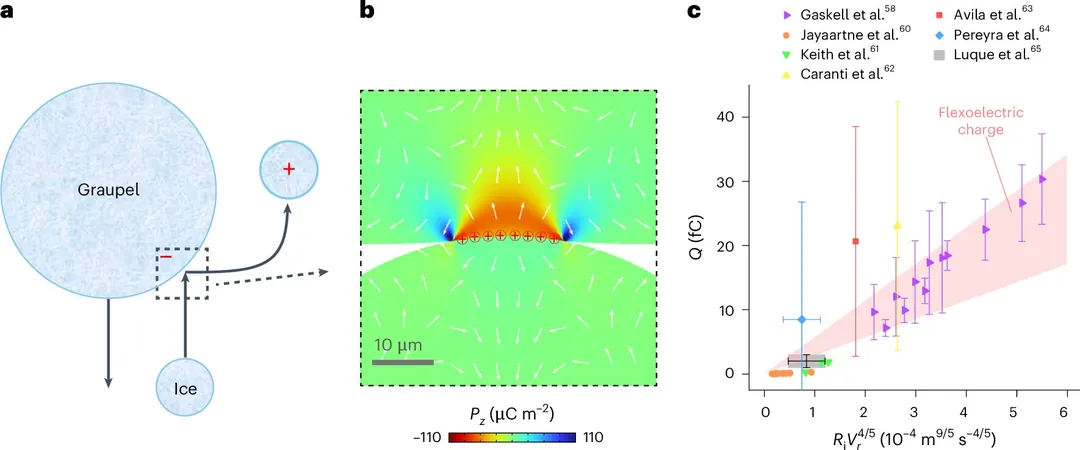
Revolutionary CRISPR Breakthrough Offers Hope for Sickle Cell Treatment
2025-08-18
Author: Benjamin
A Groundbreaking Leap in Genetic Treatment
In a stunning advancement, scientists at UNSW Sydney have unveiled a next-generation CRISPR technology that paves the way for safer treatments of genetic disorders like Sickle Cell disease. This innovative research also debunks the myth that chemical tags on DNA are just genetic fluff, revealing their vital role in gene silencing.
The Shift in Scientific Understanding
For years, the scientific community has grappled with the purpose of methyl groups—tiny chemical clusters on DNA long thought to be merely clutter in the genome where genes are silenced. But pivotal research from UNSW and St Jude Children's Research Hospital has shown that leveling these tags can reactivate genes, affirming that methylation is not merely correlated with gene inactivity but directly responsible for it.
"We demonstrated that removing these 'cobwebs' allows genes to function again," explains Professor Merlin Crossley, a lead author of the study. Moreover, the reinstatement of methyl groups subsequently turns the genes off again, proving their essential role.
Decoding CRISPR: A Gene-Editing Game Changer
CRISPR, which stands for clustered regularly interspaced short palindromic repeats, is a revolutionary gene-editing technology allowing precise alterations in DNA, cleaning up faulty sequences. Initially, this technology required cutting the DNA, which posed risks of unintended mutations. The new third generation of CRISPR, known as epigenetic editing, forgoes these cuts, instead focusing on chemical modifications to the gene's surface—specifically, the removal of methyl groups from suppressed genes.
Hope for Sickle Cell Disease
This exciting method holds immense promise for tackling Sickle Cell disease, a genetic condition that distorts red blood cells, leading to chronic pain and serious health complications. As Professor Crossley notes, traditional gene therapies come with a cancer risk due to DNA cuts. "But with this new approach, we can potentially avoid these hazards altogether," he states.
Rather than slicing DNA, this modified CRISPR delivers enzymes that dismantle the methyl groups, effectively reactivating silenced genes. The foetal globin gene, crucial for oxygen transport in unborn babies, could be turned back on post-birth, serving as a workaround for the faulty genes responsible for Sickle Cell.
The Bigger Picture
So far, these groundbreaking experiments have been confined to laboratory settings utilizing human cells. Nevertheless, co-author Professor Kate Quinlan expresses optimism: "This discovery isn't just a game changer for Sickle Cell disease; it opens doors for other genetic disorders. By manipulating methyl groups, we can potentially switch genes on and off without directly altering the DNA sequence, reducing the risks associated with earlier CRISPR generations."
Looking ahead, if animal tests and clinical trials yield favorable results, this technique could revolutionize Sickle Cell treatment. The process would involve extracting a patient’s blood stem cells, applying epigenetic editing to reactivate the foetal globin gene, and reintroducing the edited cells, which would return to the bone marrow to produce healthier blood cells.









 Brasil (PT)
Brasil (PT)
 Canada (EN)
Canada (EN)
 Chile (ES)
Chile (ES)
 Česko (CS)
Česko (CS)
 대한민국 (KO)
대한민국 (KO)
 España (ES)
España (ES)
 France (FR)
France (FR)
 Hong Kong (EN)
Hong Kong (EN)
 Italia (IT)
Italia (IT)
 日本 (JA)
日本 (JA)
 Magyarország (HU)
Magyarország (HU)
 Norge (NO)
Norge (NO)
 Polska (PL)
Polska (PL)
 Schweiz (DE)
Schweiz (DE)
 Singapore (EN)
Singapore (EN)
 Sverige (SV)
Sverige (SV)
 Suomi (FI)
Suomi (FI)
 Türkiye (TR)
Türkiye (TR)
 الإمارات العربية المتحدة (AR)
الإمارات العربية المتحدة (AR)